About Stimulant Addiction
Learn More About Stimulant Addiction
Stimulants are a category of drugs that interact with the central nervous system to increase energy, focus, and alertness. Stimulants accomplish this by enhancing the effectiveness of the neurotransmitters norepinephrine and dopamine, which are associated with feelings of pleasure, motivation, and euphoria.
Also sometimes referred to as uppers, the category of stimulants includes a variety of substances, some of which are legal and some of which are not. For example, caffeine and nicotine are both stimulants, as are cocaine and methamphetamine. In medical situations, stimulants are most commonly prescribed to treat symptoms related to attention-deficit/hyperactivity disorder (ADHD) and narcolepsy. Some conditions involving blood pressure are also sometimes treated with stimulants. Adderall, Ritalin, Dexedrine, and Vyvanse are among the more commonly prescribed stimulant medications.
Because they are so widely available, and because they create such desirable effects as motivation and focus, stimulants are often abused for recreational and performance-enhancing purposes. In recent years, Ritalin and Adderall have become popular substances of abuse among people who are looking for a cognitive boost to complete academic or work-related projects.
With such a wide range of substances within the category of stimulants, abuse of these drugs can cause negative effects that range from temporary issues, such as insomnia, to devastating outcomes, such as irreversible organ damage and even death. With proper professional intervention, though, dependence upon stimulants can be overcome.
Statistics
Stimulant Addiction Statistics
Cocaine, which is a stimulant, is the most trafficked and abused illegal stimulant in the world. More than 35 million adults in the United States say that they have used cocaine at least once in their lives, and about two million Americans admit to having used the drug in the 30 days directly prior to being asked. Negative outcomes related to widespread cocaine abuse are responsible for about 500,000 visits to emergency rooms and urgent care centers every year.
More than 15 million Americans have told researchers that they have abused amphetamines, including crystal methamphetamine (commonly referred to simply as meth). Similar to cocaine, experts estimate that about two million people are current users of meth or another amphetamine, meaning that they have abused one of the stimulants at least once in the month prior to being questioned.
Two-thirds of college seniors in the U.S. say that they have been offered or had the opportunity to abuse a prescription stimulant, such as Adderall or Ritalin, and about one-third of college seniors say they have engaged in this form of substance abuse. Among younger students, about one in ten adolescents and teens between the ages of 14 and 17 report having intentionally misused a prescription stimulant in the past year, and more than 35% of high school students have told surveyors that they believe stimulant abuse is a growing problem among members of their age group.
Causes & Risks
Causes and Risk Factors for Stimulant Addiction
Substance abuse and addiction can be influenced by a variety of genetic and environmental factors. While no one factor can definitively predict if a person will abuse or become addicted to a stimulant, the following are among the more common influences and risk factors:
Genetic: Substance use disorders and addiction have a strong familial component. A person whose parents or siblings abused drugs or developed a substance use disorder is much more likely to have similar problems than an individual whose family history is free of addiction. Research involving twins and adopted children supports the theory that people have a genetic predisposition to addiction. With recent advances in genetic research, scientists have begun to identify specific genes and gene clusters that appear to be influential in determining whether or not a person will develop an addiction.
Environmental: Family history of substance abuse can also be an environmental influence. Children who grow up in houses where drug use is common are at increased risk for replicating this behavior either during their youth or later in life. The prevalence of prescription stimulants, such as Ritalin and Adderall, is believed to be a strong environmental influence on the rising rates of abuse of these substances. Other environmental influences include experiencing high levels of stress, living in an impoverished neighborhood, associating with peers who engage in stimulant abuse, and suffering from trauma.
Risk Factors:
- Easy access to stimulant-based medications
- Familiarity with prescription stimulants
- Family history of substance abuse and/or mental illness
- Personal history of prior substance abuse and/or mental illness
- Living in poverty
- Having poor stress management capabilities
- Being male
Signs & Symptoms
Signs and Symptoms of Stimulant Addiction
No single sign or set of signs is common among every person who abuses a stimulant. However, many people who engage in this behavior will likely exhibit some, or many, of the following symptoms:
Behavioral symptoms:
- Attempting to acquire multiple prescriptions for the same stimulant
- Borrowing or stealing prescription stimulants from friends or family members
- Visiting websites to purchase stimulants without a prescription
- Acting secretively or deceptively about one’s whereabouts and activities
- Withdrawing from family or friends
- Exhibiting increased energy and motivation
Physical symptoms:
- Increased blood pressure
- Rapid heartbeat
- Pupil dilation
- Extreme perspiration
- Dry mouth
- Rapid breathing
- Loss of appetite
- Weight loss
- Disrupted sleep patterns
Cognitive symptoms:
- Enhanced focus and concentration
- Improved memory
- Paranoia
- Hallucinations
Psychosocial symptoms:
- Irritability when unable to acquire stimulants
- Expressions of anxiety
- Mood swings
- Out-of-character anger and aggressiveness
- Increased confidence and sense of self-worth
Effects
Effects of Stimulant Addiction
Abusing prescription stimulants, such as Adderall and Ritalin, can lead to dangerous side effects, as can the abuse of more powerful stimulants, such as cocaine and amphetamines. The following effects are common among people who abuse stimulants:
- Anhedonia (inability to experience pleasure)
- High blood pressure
- Heart problems
- Panic attacks
- Liver damage
- Kidney damage
- Paranoia
- Dehydration
- Erratic behavior
- Depression
Co-Occurring Disorders
Stimulants Abuse & Co-Occurring Disorders
Many people who abuse stimulants are also dealing with one or more additional mental health challenges. The following are among the common co-occurring disorders that are experienced by people who engage in stimulant abuse:
- Attention-deficit/hyperactivity disorder
- Bipolar disorder
- Major depressive disorder
- Oppositional defiant disorder
- Persistent depressive disorder
- Posttraumatic stress disorder
Withdrawal
Effects of Stimulants Withdrawal & Overdose
Effects of stimulant withdrawal: Cessation of stimulant abuse after a person has become dependent on these substances can cause uncomfortable, painful, and even dangerous symptoms. These symptoms can develop within a few hours, and some can last for more than a week. The following are among the most common symptoms that are associated with stimulant withdrawal:
- Powerful drug cravings
- Fatigue
- Exhaustion
- Irritability
- Hallucinations
- Delusions
- Anxiety
- Paranoia
- Insomnia
- Joint and muscle pain
Effects of stimulant overdose: Taking stimulants in an amount or potency that exceeds the body’s ability to safely metabolize them can be a dangerous, and potentially deadly, experience. The following symptoms may indicate that a person is in the midst of a stimulant overdose:
- Respiratory distress
- Heart failure
- Kidney failure
- Extremely high body temperature
- Extremely high blood pressure
- Convulsions
- Loss of consciousness
- Stroke
- Coma
















